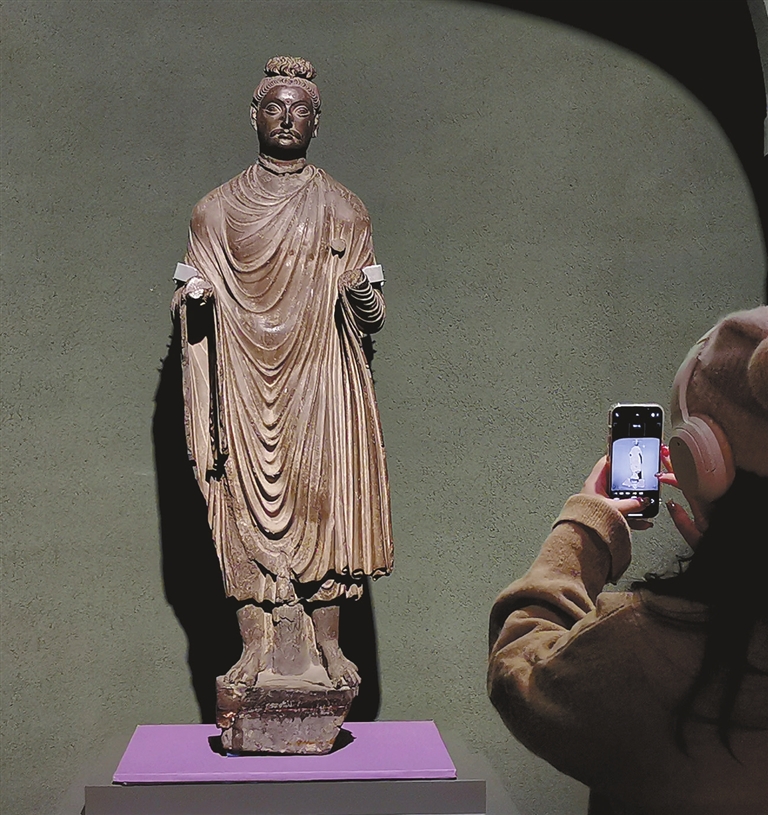
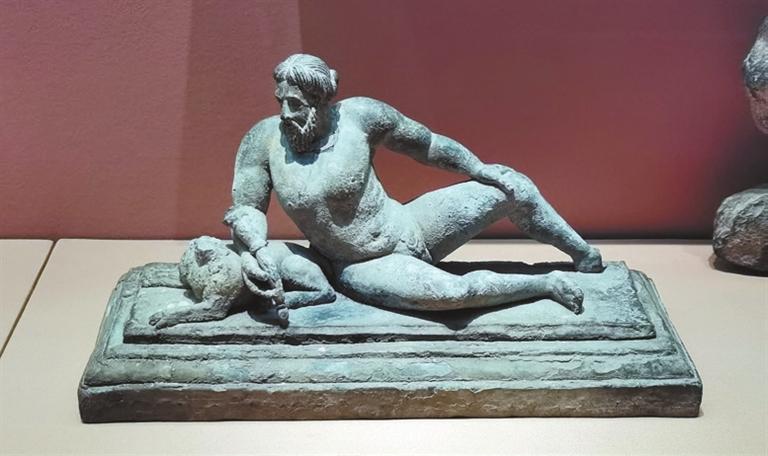
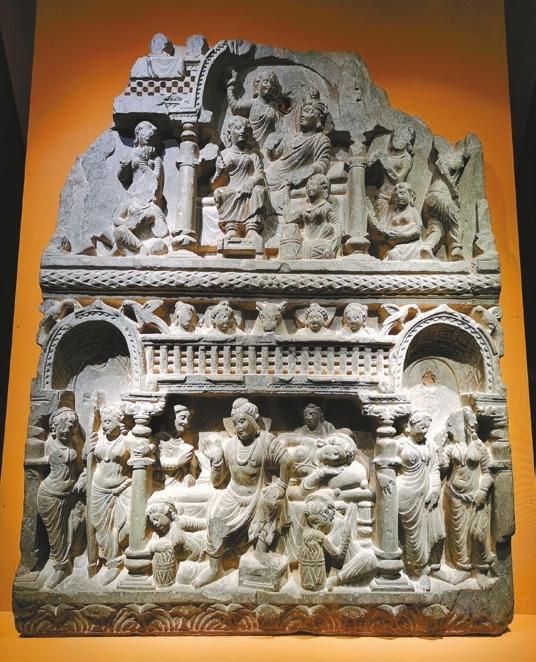
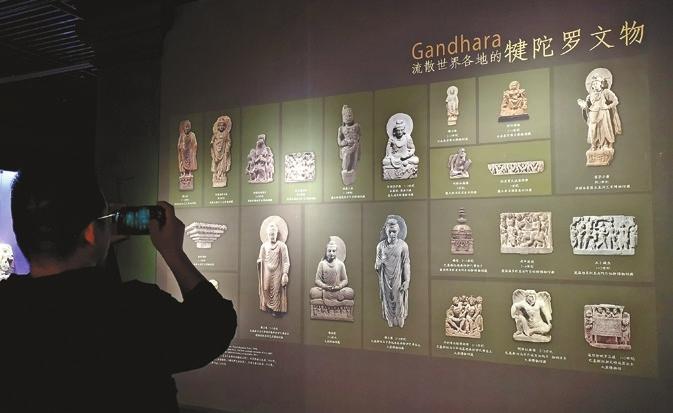
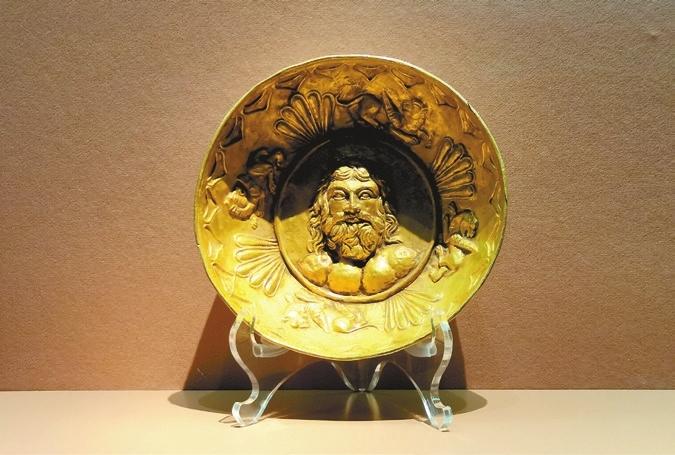
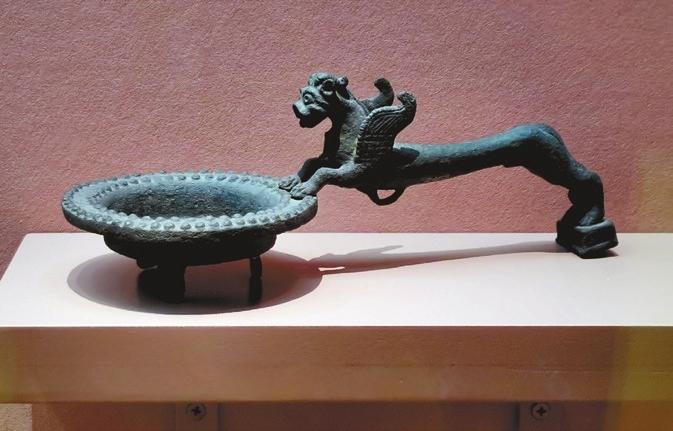
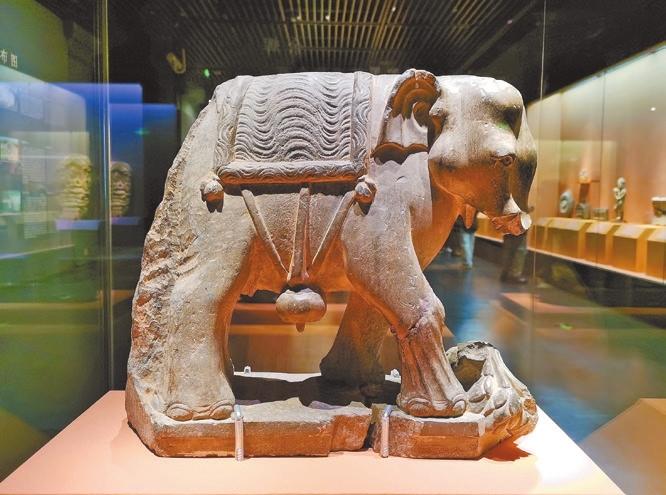
Cao Zhen caozhen0806@126.com OVER 200 artifacts, including 173 from seven museums in Pakistan and 30 from the Palace Museum in Beijing, are on display at the newly opened “Gandhara Heritage Along the Silk Road: A Pakistan-China Joint Exhibition” at Shenzhen Museum’s History and Folk Culture Division. Organized by Shenzhen Museum, the Department of Archaeology and Museums of Pakistan’s National Heritage and Culture Division, and the Palace Museum, the exhibition showcases Buddhist statues, components of pagodas and gold and silver ware, demonstrating the artistic charm of Gandhara culture, its diversity and its far-reaching influence on China and East Asia. The archaeological sites of ancient Gandhara are mainly scattered across the southern end of the Hindu Kush and Karakorum mountains, including the Peshawar Valley in north Pakistan, the east band of the Indus River and the eastern part of the Kabul River valley in Afghanistan. This area serves as a key point on the ancient Silk Road, acting as an intersection where the Mediterranean, Iranian, Central Asian, and Indian civilizations intersected. Mythology, aesthetics, and philosophy from ancient Greece, Zoroastrianism and Messianism from West Asia, as well as Hinduism and Buddhism from South Asia, spread and influenced each other in the area, making this region a world religious hub. Throughout its millennia-long history, Gandhara was ruled by different empires, resulting in a rich and diverse cultural landscape in the region. With active and continuous exchanges and mutual inspirations along the Silk Road, Gandhara showed its unique vitality and creativity, profoundly impacting the spread of Asian civilization. For example, in the early stage (1st-3rd century) of the Gandhara art, it was influenced by the ancient Greco-Roman art, with architecture, statues, and decorative patterns from the Mediterranean being fashionable. The images of Buddha and Bodhisattva exhibit characteristics reminiscent of ancient Greek and Roman sculptures, notably featuring wavy hair and distinctly European facial contours. While the stone carving artifacts at the exhibition may seem similar to each other, each piece tells a vivid story through exquisite features. The stories are mainly about Sakyamuni’s life, including the most miraculous and significant scenes, such as his birth, prince life, hardships, enlightenment, salvation, and parinirvana (perfect rest). Detailed Chinese and English descriptions accompany the exhibits for visitors to delve into the narratives. This year marks the 10th anniversary of the Belt and Road Initiative. Both China and Pakistan, as ancient civilizations on the Silk Road, have witnessed a long history of cultural and artistic exchanges between the two countries. The exhibition, previously held in Beijing in March, has been listed twice in a joint statement between China and Pakistan. During the exhibition, lectures, painting events, and educational activities will also be held to enhance visitors’ experiences. Dates: Through March 24, 2024 Reservations: WeChat miniprogram “深圳博物馆” Venue: Shenzhen Museum’s History and Folk Culture Division, Futian District (深圳博物馆历史民俗馆) Metro: Line 2 or 4 to Civic Center Station (市民中心站), Exit B | 
